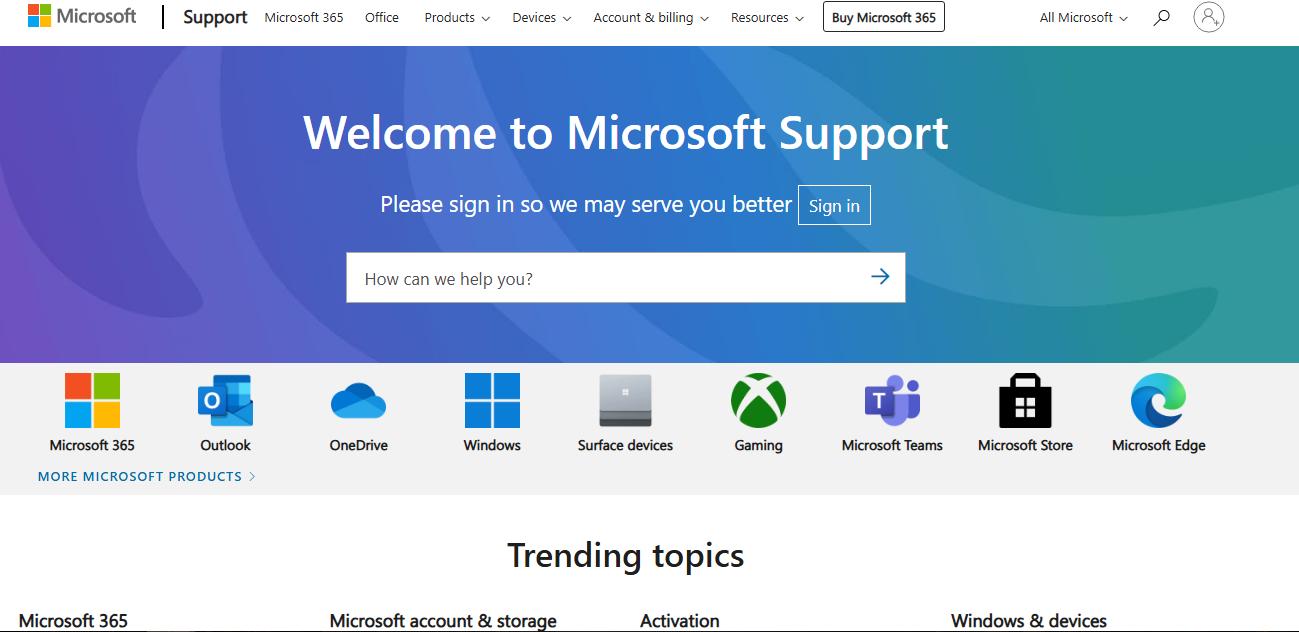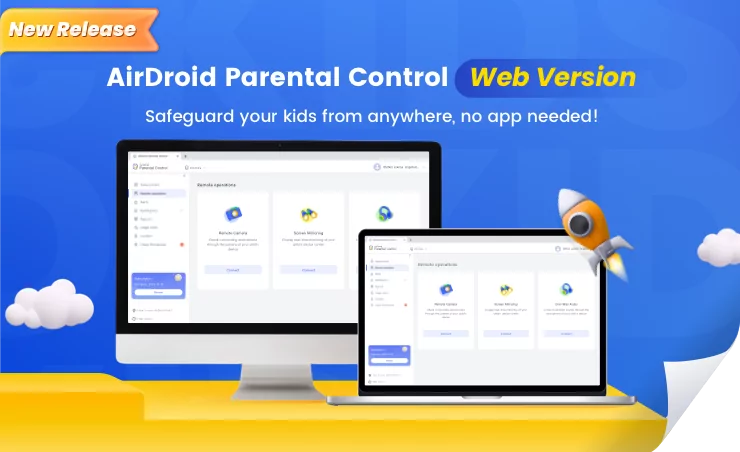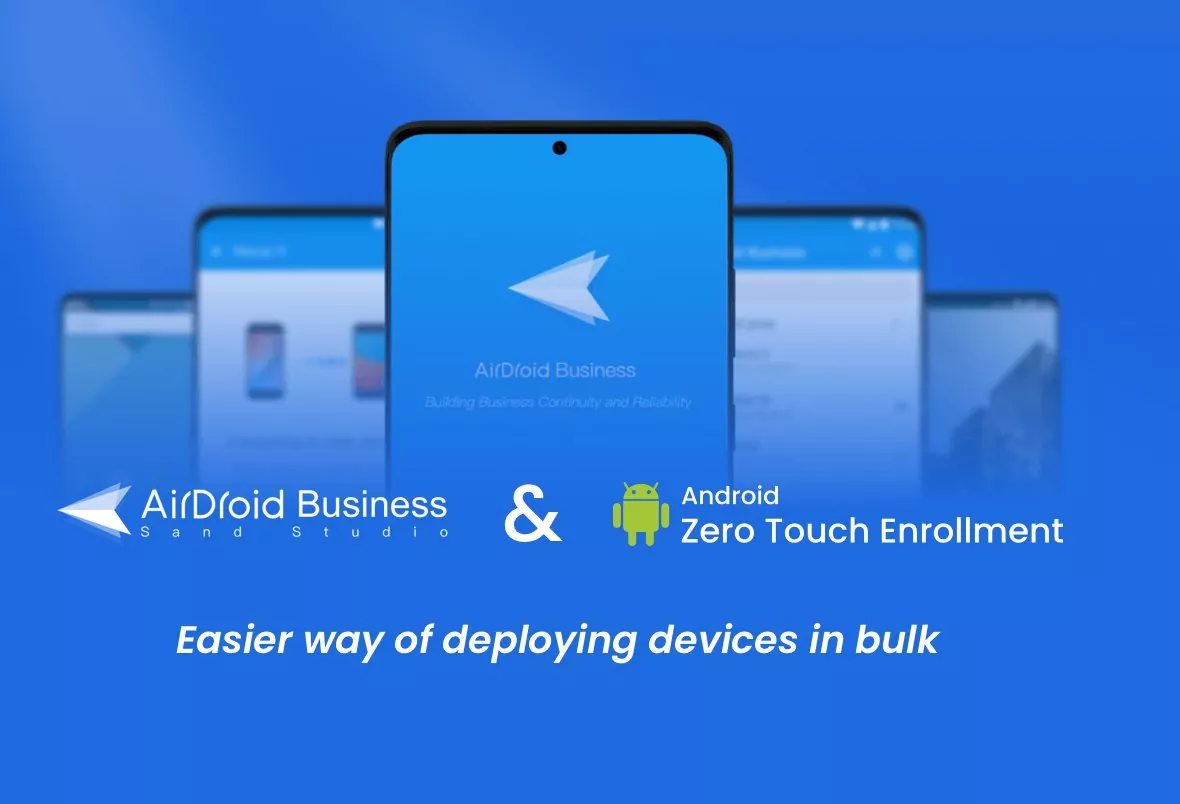The Ultimate Guide to Starting a Tech Support Business
Did you know Microsoft generated revenue worth USD 2780 billion from IT services in 2024 alone? This statistic proves what you can reap big from a successful IT/ tech support business.
More and more modern organizations are outsourcing services, including data management, cloud computing, technical training, computer configuration, and cyber security, to managed service providers. Leveraging tech support services minimizes costs and enhances efficiency for companies.
With this in mind, starting a Tech support business remains viable. But, you may be unsure of where to begin. In this guide, you'll learn everything about how to start a tech support business and if there are risks associated with the venture.
Part 1 : What Is a Tech Support Business?
A tech support business is a form of customer service in which professional technicians resolve customer's tech issues related to consumer electronics, such as computer hardware and software. For example, managed service provider (MSP) businesses specialize in offering tech support to organizations.
Most tech businesses diagnose and resolve technical problems through call centers, in-person support emails, and online chats. For instance, Microsoft links with tech support businesses to offer clients professional assistance for its various hardware and software. Whether you have problems activating Windows or signing in to your Microsoft account, you'll get expert advice and solutions.

Technicians offer tech support in multiple tiers, depending on the unique needs of specific companies. Unlike providing a general tech support outfit for clients, tech support businesses use multi-tier models as follows:
Tier 1(T1or L1)
This is the first level of tech support. Here, specialists gather basic information about an issue by asking straightforward questions. They also use tools, including troubleshooting methods, to resolve password/username issues, network issues, and software installation/reinstallation. In addition, T1 support assists you in navigating app menus with ease.
Tier 2(T2or L2)
T2 includes offering deeper tech support. While it's costlier than T1, users gain more knowledge and enjoy expert intervention from tier 2 tech support. T2 personnel go beyond resolving issues forwarded by T1 professionals. Issues unresolvable at this point are escalated to Tier 3.
Tier 3(T3 or L3)
This is one of the highest tech support levels. Experts handle difficult issues escalating from tiers one and two. Additionally, T3 technicians conduct expert-level troubleshooting, analysis, and back-end support. They also research new solutions, including on-site installations, hardware replacements, diagnostic testing, and software repair.
While some companies have an in-house technical support team, there's a soaring demand for outsourced tech assistance. IT services make up 72% of the global outsourcing contract value. That said, starting your tech support business remains lucrative and fulfilling if you have the right strategy.
Part 2 : How to Start a Tech Support Business?
If you love everything computers, including building or upgrading old ones, don't hesitate to turn your passion for tech support into a lucrative business. Starting a tech support business isn't rocket science. With the right hardware, software, phone, and expertise, you can quickly start a tech support biz successfully from the ground up and watch it grow.
This simple guide covers all the vital steps to follow when starting a thriving tech support venture, including proper planning, registration, getting your first clients, and legal compliance requirements.
Let's find out.
Step 1: Establish Your Niche
The first step towards starting a tech support business involves identifying the tech services you want to offer. While it may seem convenient to assume you can provide any tech service, specializing is key to the success of your startup. For instance, one of the top U.S. Telkom brands, Sound Telecom, owes its success to niching down and offering telecom solutions instead of generalizing services.
Similarly, ask yourself, what do I want to offer? Is it about data security services, fixing email-related issues, or file backup assistance? Do you want to resolve hardware or software issues?
Explore your skills, interests, expertise, and experiences to determine the right niche and sub-niche for you. For instance, if you're highly experienced in fixing Mac apps and devices, it may not be wise to offer Windows repair and maintenance as a niche at first.
Start with the areas you're knowledgeable in and transition gradually as you learn new skills. Focus on your strengths. If you're excellent at consulting, software/hardware troubleshooting, or network support, turn those skills into a viable business.
When picking a niche, consider the type of clients you're targeting. Who needs your tech support offerings? Are you looking to serve work-from-home individuals, small/micro organizations, or B2B clients?
Understanding or establishing your niche ensures you offer in-demand skills, giving you a competitive edge over others. Further, niching defines your target market to expose unique gaps. This ensures you focus your goals and build a reputation based on clear value propositions for your tech support biz.
Step 2: Conduct In-depth Market Research
After outlining the tech services you want to provide, the next critical step is researching your market. Find out what skills are in demand and how much people/clients are willing and able to pay for such tech support services.
Research who needs your offerings to determine if your ideas are valid and affordable. You don't want to offer irrelevant services that your target clients don't need at a certain time.
Additionally, find out information about your potential clients. Are your tech support offers ideal for individual clients, small companies, or corporate organizations?
Understand your target client's references as well. Do the clients prefer physical (in-person) support or remote assistance? How many hours do clients spend on tech support?
Start your research with your friends and family. Ask them about the various tech issues they face, how they find support, and the approximate price they'd pay for tech support.
What are your target customers' pain points? Are they experiencing problems with password/username management, app installations, account activation, software issues, or data security? Researching prospective clients ensures your services are properly positioned to solve tech issues efficiently.
Aside from collecting information about your target clients, it's also imperative to research your competitors. Analyze your competitors to learn their strengths, weaknesses, and pricing models. Competitor analysis helps you identify unmet demands, ensuring you develop a unique selling point and competitive pricing for your services.
If you're looking to start a tech support biz, you must stay on top of technological advancements. Research new market trends and align your business with modern, niche-specific market trends.
Research methods include surveys, interviews, online tools, and industry insights. This information builds a solid foundation. The foundational knowledge saves you time and energy when looking for new clients for your tech support startup.
Step 3: Write a Detailed Business Plan
Once you have niches and your market research is on point, it's time to create a comprehensive business plan for your tech support business. This is a roadmap outlining your vision and is a key determinant of whether you succeed or not. A Harvard Business Review found that startups with business plans have a 16% likelihood of succeeding, unlike their other counterparts.
A good business plan includes your goals, strategy, target market, unique value proposition, vision, and resources. While it can vary slightly depending on various needs, there are basic details every tech business shouldn't miss. A Solid business plan includes:
1Executive Summary
This is the most critical element of a business plan. Summarize why your business idea is unique compared to your competitors. Explain the solutions you're providing captivatingly to hook potential investors or readers. Ensure you capture your business's goals, marketing strategy, competitors, target market, and business model.

Source: THE BALANCE
2Company Summary
Also known as a headline statement, your company summary includes a single sentence entailing a brief overview of your business, the value you intend to offer, and opportunities/solutions in the market.
3Market Research
Conduct market research to validate your ideas before incorporating the findings into your business plan. Find out the age, gender, location, and purchasing habits of potential clients. Additionally, perform a competitor analysis to identify gaps your business can capitalize on.
4Products/Services Description
Before writing this part, research the market and tailor your product to the tech problems people are facing. Describe what you're offering regarding what people need. Ensure your solutions match up with consumer problems.
5Operations and Management Structure
Highlight your team's expertise and speculate about future new hires. For instance, include your team of coding experts, graphic designers, and marketers in your business plan and highlight the possibility of hiring a chief financial officer as your business grows.
Also, define your startup's organizational structure, including your various business partners and players. Be clear about your company's hierarchy. This makes it easier to understand the reporting process.
6Marketing Plan
Describe the sales and marketing strategies you have in place to grow your tech business. Also, include the risks, goals, and marketing budget you project when running your business.
7Financial Plan
This involves details about funding, budget, and sales goals for your tech support company. What are your financial projections, startup costs, and revenue forecast? Establish your startup's break-even point to determine the funding amount required and sources of funds.
A good business plan goes beyond planning. When done correctly, it's a tool for attracting investors. Therefore, ensure yours is compelling and concise.
Step 4: Set Up Legal and Foundational Elements of Your Business
Like other startups, a tech support business comes with unique legal requirements. Here's how to set up your business;
- Naming: choose an appropriate name for your business. Keep it simple and ensure it reflects your work. You may choose a unique Doing Business As (DBA) to market your business effectively. The U.S. Small Business Administration's guide is helpful when choosing your business name.
- Choose a structure for your tech support startup: What's your company's structure? Is it a sole proprietorship, LLC (Limited Liability Company), or corporation?
- Register your business: Every business has various registration requirements. Register your tech support startup with the appropriate bodies to make it legally compliant. Additionally, obtain relevant licenses and permits as your local state/county requires. To check your local requirements online, visit the official Small Business Authority website.
- Open a business bank account: Open a business bank account to separate your finances and assets from your business's. An official account makes tax filing and accounting easier.
- Acquire necessary equipment: Purchase all the equipment for providing tech support, including ticket management software, customer relationship management tools, communication apps, and so on. Also, acquire high-performance computers and install high-speed internet to enhance stability when providing tech services.
- Hire skilled staff, outsource, or collaborate with other companies: To run your tech startup successfully, you may need to hire tech experts such as programmers and coders. Consider outsourcing services from tech professionals in line with your budget or collaborating with expert partners for optimum growth.
- Build a professional brand: Develop a logo, website, and social media pages to enhance your brand's visibility and authority.
Step 5: Promote and Market Your Business
This is a make-break stage for your tech support startup. Once your business is up and running, getting short-term and long-term clients remains the most challenging part.
However, let it not discourage you. Some practical, proven strategies to market your technical support business include:
1Website Marketing
A user-centric website creates online visibility for your tech support business. Also, it's a good place for potential clients, investors, and partners to learn more about your offerings. Websites also provide contact details for your startups.
Make your website Search-engine-friendly for maximum results by uploading relevant content, using keywords, uploading SEO-optimized images/videos, and improving your site's speed. Position contact information and Call-to-actions strategically to enhance easy communication.
2Referrals
Ask your friends, colleagues, and family to recommend your services to others. If you have existing clients, encourage them to tell others about your business.
Develop a referral program with rewards and incentives to appreciate their efforts. Also, consider giving coupons and referral discounts for every customer referred to you. If done correctly, referral marketing effectively creates a steady stream of long-term clients to grow your tech support business.
3Social Media Marketing
With over five billion users in 2024 alone, social media users are projected to reach over six billion in 2028. Social media marketing is undoubtedly a proven strategy for promoting your tech startup. For example, Cloudstaff, a renowned remote hiring outsourcing brand, reaches over 80K followers on Facebook, utilizing the platform to promote its business effectively.

Source: Cloudstaff Facebook
To promote your business, join various social media platforms and publish resourceful, engaging content. Ensure your content aligns with a specific site. For instance, long-form content does well on LinkedIn but isn't viable for TikTok and Instagram.
4Content Marketing
Create and share engaging, educative content on your website or social media to attract and retain tech support clients. Publishing high-quality, SEO-optimized content is a clever way of demonstrating your expertise. Share knowledge freely via your content to show clients you understand their pain points.
5Email Marketing
Organize an email list and launch targeted email campaigns to give potential clients insights. Focus on building professional relationships first before gradually promoting your services.
6Networking
Meet potential partners and customers at local chamber of commerce meetings. Additionally, join virtual, niche-specific conferences and present your products. Networking allows you to build an email list that is helpful for email marketing.
7Leverage Positive Reviews and Testimonials
Request existing clients to share positive reviews on Google, Yelp, or a business website. Good reviews show you can be trusted to deliver excellent tech support, indirectly attracting new customers.
Nexa, a tech support brand offering virtual receptionist services, is a classic example of how to use customer reviews and testimonials to promote your business. Here's one of their clients' impressive reviews:

Source: Nexa
A rule of thumb when using clients' reviews to promote your business is to ensure they are factual. Resist the temptation to post fake, enticing testimonials, as they can ruin your brand.
Step 6: Deliver Exceptional Tech Support Services
With all systems going and new clients streaming in, it's time to outperform your competitors. The success of every tech support biz depends on how well you serve your customers.
But how do I ensure the delivery of top-notch services? Here's how:
- Effective communication: Understand your client's expectations and communicate the solutions. Give timely, prompt responses to enhance satisfaction. In addition, try to meet your client's agreements without fail.
- Offer reliable support: Ensure you are a reliable source of tech-related solutions. Respond to queries as fast as possible and always give valuable answers. Tell clients your official working hours if you don't intend to work 24/7.
- Seek feedback: Collect feedback from existing clients, teammates, partners, friends, and investors to improve your tech support business.
- Be friendly and personalize support: Tailor your business approaches to meet the unique needs of your customers. Be friendly as you serve your clients to foster lasting relationships.
- Track/monitor performance: Measure the performance of your various services to see if they are working. If possible, tweak them to ensure they meet your client's needs.
- Embrace proactive problem solving: Learn to anticipate problems and find solutions before they happen. This will cushion your clients against preventable issues, giving them an enjoyable experience when dealing with your brand.
- Train/learn continuously: Learning new methods of solving tech problems ensures your clients always get high-quality assistance. Enroll your team for training and workshops to improve service delivery.
Step 7: Scale and Grow Your Tech Support Business
Once your business acquires a steady stream of clients and you have a professional team, consider scaling it. You could add new products, including advanced tech support options.
Additionally, you may also hire new experts to facilitate more growth. For instance, you may need to hire a chief finance officer to manage your business's finances, depending on the stage of development your startup is at.
To expand your reach, boost your marketing strategies to target new customers. If your budget allows, try paid advertising. Also, network with partners and potential clients to increase your brand's reputation.
Consider offering educational workshops to establish your authority as a tech support provider. Remember to enhance your relationship with existing clients.
Like any other venture, starting a tech support business from the ground up is equally challenging and rewarding. While it's easy to learn how to start a tech support business, there are associated risks you should know if you want to succeed.
Risks of a Tech Support Business
- Fast-changing industry: Since the tech/IT industry is ever-growing, keeping up with the new tech trends may be hectic.
- Constant chargebacks: The majority of tech support businesses operate online. This puts them at risk of clients constantly seeking chargebacks from their bank. Regular chargebacks may taint your reputation, leading to the closure of your bank account.
- Failure: According to research, 11 out of 12 startups fail within a few years of operation. Tech support businesses are no different. While you have a vision to see your business thrive, failure is a risk you have to deal with occasionally. However, with proper re-strategizing, you'll eventually succeed.
- Stiff competition: The IT sector is competitive and fast-paced. This may hinder your tech support startup from standing out from the crowded market.
- Data security issues: Since you'll be handling and sharing sensitive data during your work, you must protect client data at all costs to prevent lawsuits.
Conclusion
Starting a tech support business requires careful planning and practical strategies to succeed. From defining your tech niche to creating a business plan to registration, hiring experts, seeking your first clients, and growing and scaling, your business' excellence depends on how well you position your tech support services to meet the growing market demand. Follow the steps above and launch your tech business today.








Leave a Reply.